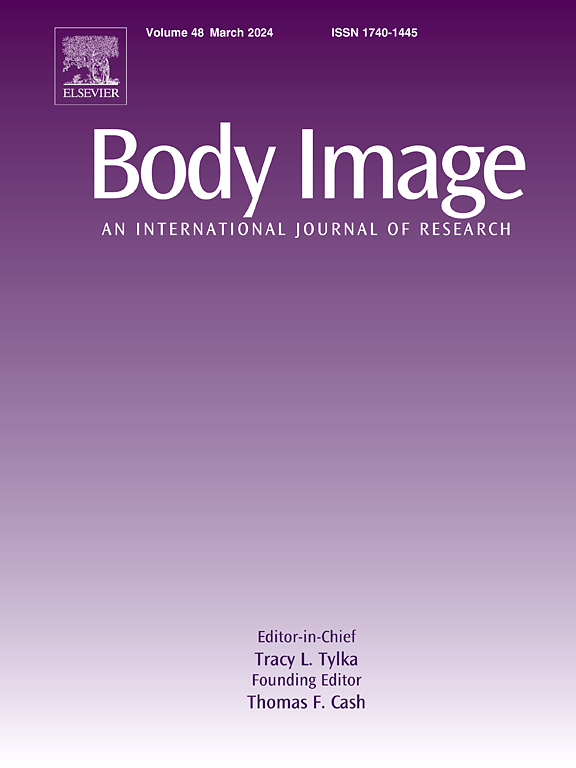Going beyond appearance: Embodiment throughout adolescence and its associations with identity functioning and eating behaviors
IF 5.4
1区 心理学
Q1 PSYCHIATRY
引用次数: 0
Abstract
The complex relationship between body (dis)satisfaction, identity, and disordered eating in adolescence has been highlighted in previous studies. However, longitudinal research on this interplay using a holistic approach in assessing embodiment is lacking. The current study used three-wave longitudinal data (T1: N = 923; 59.6 % female; Mage = 16.19, SD = 1.31, range = 13–21 years) to examine the development of embodiment during adolescence and to explore its (temporal) associations with identity, eating disorder symptoms, and eating competence. First, cross-lagged analyses revealed that embodiment positively predicted identity synthesis and eating competence skills over time, whereas it negatively predicted identity confusion and eating disorder symptoms over time, with some associations being bidirectional. Second, latent growth curve modeling indicated that embodiment showed increases throughout adolescence and emerging adulthood. Relatedly, interindividual differences in development were demonstrated, with latent class growth analysis pointing to four embodiment trajectory classes (high, moderate, low, and problematic embodiment). Finally, multigroup latent growth curve modeling suggested that the embodiment trajectory classes differed meaningfully on identity functioning, eating disorder symptoms, and eating competence skills. Overall, this study suggests the importance of embodiment for both research and clinical practice.
超越外表:整个青春期的化身及其与身份功能和饮食行为的联系
在以往的研究中,青少年对身体(不)满意、自我认同和饮食失调之间的复杂关系已经得到了强调。然而,缺乏对这种相互作用的纵向研究,使用整体方法来评估体现。本研究采用三波纵向数据(T1: N = 923;59.6 %女;Mage = 16.19, SD = 1.31,范围= 13-21岁),以检查青春期体现的发展,并探讨其与身份、饮食失调症状和饮食能力的(时间)关联。首先,交叉滞后分析显示,随着时间的推移,体现对身份综合和饮食能力技能有积极的预测,而对身份混乱和饮食失调症状有消极的预测,其中一些关联是双向的。其次,潜在增长曲线模型表明,体现在整个青春期和成年初期都有所增加。与此相关,个体间的发展差异被证明,潜在类别增长分析指出了四个体现轨迹类别(高、中、低和有问题的体现)。最后,多组潜在生长曲线模型显示,体现轨迹类别在身份功能、饮食失调症状和饮食能力技能上存在显著差异。总之,本研究提示了体现在研究和临床实践中的重要性。
本文章由计算机程序翻译,如有差异,请以英文原文为准。
求助全文
约1分钟内获得全文
求助全文
来源期刊

Body Image
Multiple-
CiteScore
8.70
自引率
28.80%
发文量
174
期刊介绍:
Body Image is an international, peer-reviewed journal that publishes high-quality, scientific articles on body image and human physical appearance. Body Image is a multi-faceted concept that refers to persons perceptions and attitudes about their own body, particularly but not exclusively its appearance. The journal invites contributions from a broad range of disciplines-psychological science, other social and behavioral sciences, and medical and health sciences. The journal publishes original research articles, brief research reports, theoretical and review papers, and science-based practitioner reports of interest. Dissertation abstracts are also published online, and the journal gives an annual award for the best doctoral dissertation in this field.
 求助内容:
求助内容: 应助结果提醒方式:
应助结果提醒方式:


